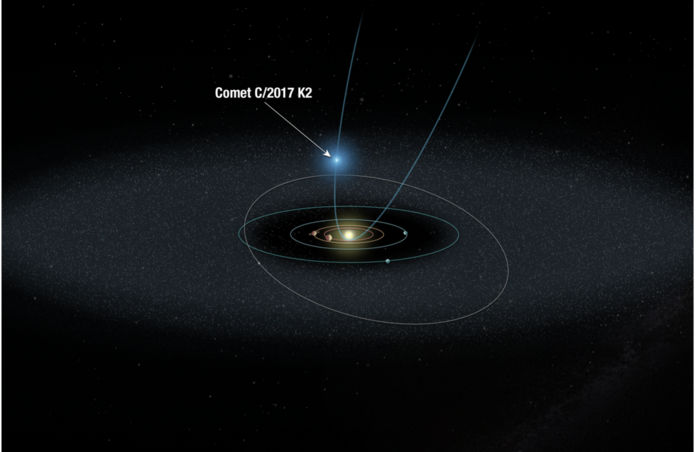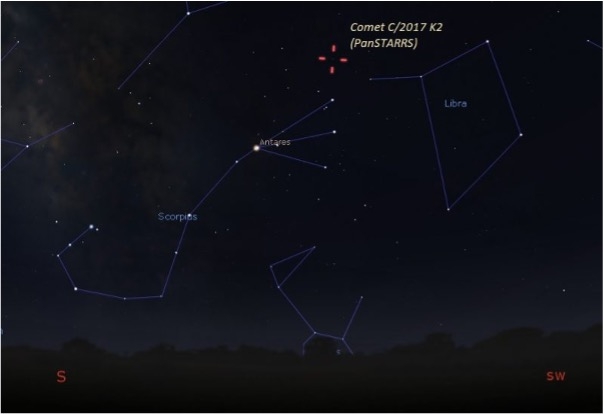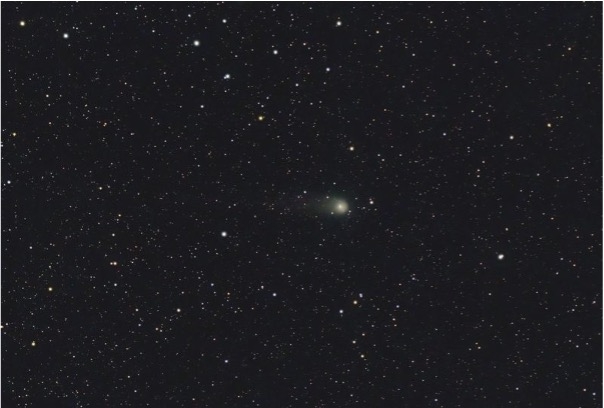Giant Comet Reaches Closest Approach to Earth

Comet C/17 K2 (PanSTARRS) has made its closest approach to earth earlier today (July 14th) at around 3am GMT and is currently headed towards the sun, reaching its perihelion later this year on the 19th of December. However, observers should still keep their eyes (or rather telescopes) peeled for the giant comet, since it can be spotted on its journey through the inner solar system throughout the summer.
The icy planetesimal was first discovered in 2017 using Pan-STARRS survey instrument in Hawaii. At the time it was the farthest active inbound comet seen, that title now taken by Comet Bernardinelli-Bernstein, and found between the orbits of Saturn and Uranus. It has taken quite the trip since, now heading towards the sun as it ultimately makes its departure from the inner solar system.
C/17 K2 is a notably large comet, however, there is some uncertainty on the exact value for the diameter of the nucleus with a range of 18-100 miles from initial observations using the Canada-France-Hawaii telescope. To add to the confusion, measurements using the Hubble Space telescope suggest a much smaller nucleus of 11 miles. To put this into perspective, the Burj Khalifa which holds the title of tallest building in the world stands at a total of half a mile – so C/17 K2 spans at least 22 Burj Khalifas!
Another indication of its vast size is its coma, which is the cloud of dust and gas that is spewed out as a comet is heated by the sun. C/17 K2’s cometary atmosphere has a diameter of 81,000 miles, which is almost the diameter of Jupiter. In addition, the expansion of the coma forms an incredibly long tail, which is suggested to be 500,000 miles from early observations.
Despite its size, the comet will remain as a telescope object since its closest encounter with earth is at a distance of 168 million miles (we won’t be having a situation like the dinosaurs!), brightening to a magnitude of 7 which is still too dim to be seen with the naked eye. Observers using a small telescope should expect to see the coma as a fuzzy patch of light around the central nucleus, and perhaps a very faint view of the tail. However, longer exposures should uncover the tail in its entirety.

when the comet will be at its closest to earth.

The comet was first visible in the Northern hemisphere in May and will cross over to the Southern hemisphere in mid-September. Astronomers have estimated that C/17 K2 has been travelling from the Oort cloud- the furthest region in our solar system- for the past 3 million years to get to us, and will not be making a second appearance for the next few million years, which makes this a once in a lifetime observation! See if you can spot the vast comet over the coming months before it leaves for its voyage across the cosmos.

Cover image: Artist’s concept of the orbit of Comet C/2017 K2 (PanSTARRS), NASA/ ESA/ A. Feild/ STScI.
Image credits:
- Eddie Irizarry/ Stellarium.
- Eddie Irizarry/ Stellarium.
- Steven Bellavia/ EarthSky Community Photos
